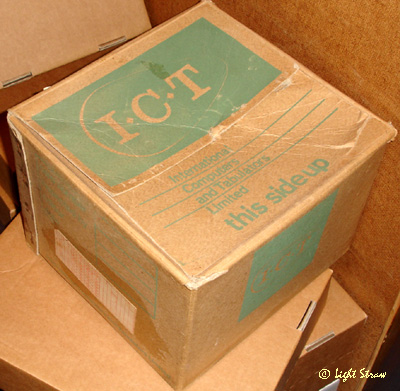 |
Accounting for the calls... |
Flimsies
Historically, details of charges for trunk calls (connected via the operator) were recorded onto paper tickets.
| LT EX131 | Reverse | |
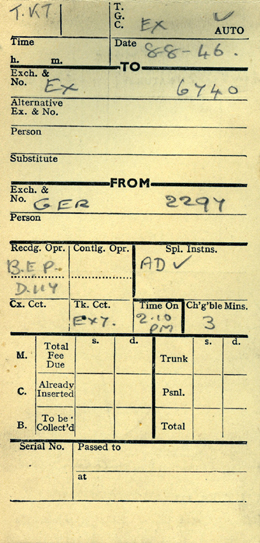 |
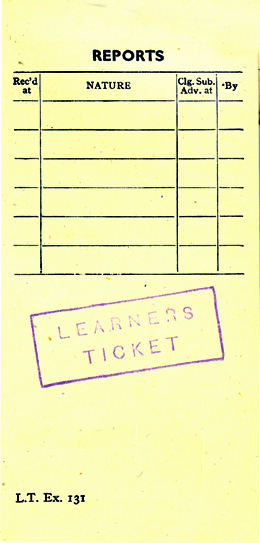 |
Learners' Tickets: |
From 1948, Canterbury Area began using punched-card equipment to process tickets from Trunk Calls. The tickets were now made of stiff card instead of paper. The first regional ticket processing centre opened in Birmingham in October 1958. The Manchester unit opened in July 1959 and Oxford in January 1960.
Telephone Ticket TT210 was used circa 1960. Later examples are shown below...
| TT223 | TT251 | |
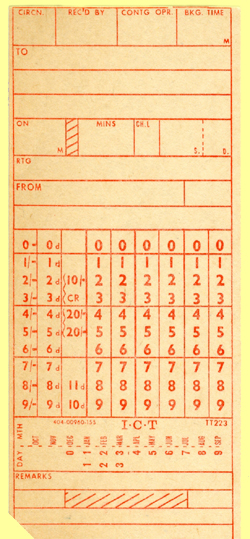 |
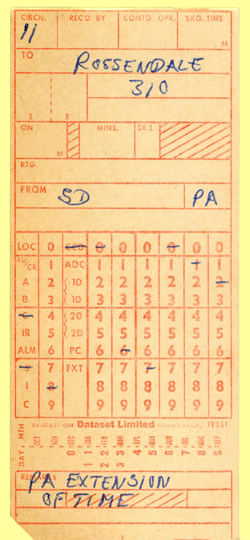 |
MATS Tickets: |
ISOCC - Input System of Operator Controlled Calls
| TT270 30-1322 | TT270 30-1392 | |
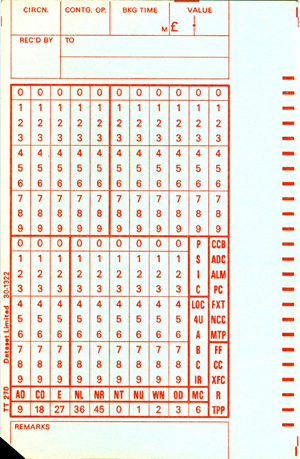 |
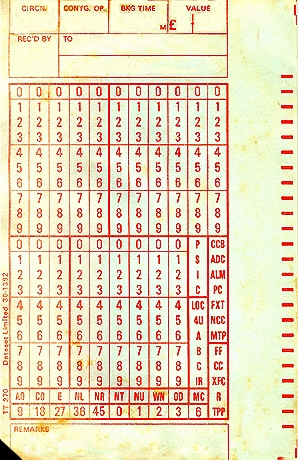 |
ISOCC Tickets TT270: |
Compare the Inland ISOCC ticket with that of the International one.
International Computers and Tabulators (ICT) was formed in 1959 by a merger of the British Tabulating Machine Company (BTM) and Powers-Samas.
Links
A paper entitled "Short-Term Memory Subtypes in Computing and Artificial Intelligence"" by Derek J.Smith gave some insight into the difficulties of processing machine readable tickets, during the 1980s.
Don Adams gives a detailed description of machine processing in the Oxford MATS Unit of the early 1960s.
All logos and trade marks are the property of their respective owners and are used on the Light Straw site(s) for review only. Students and researchers are recommended to make their own independent enquiries as to the accuracy of the information contained therein.